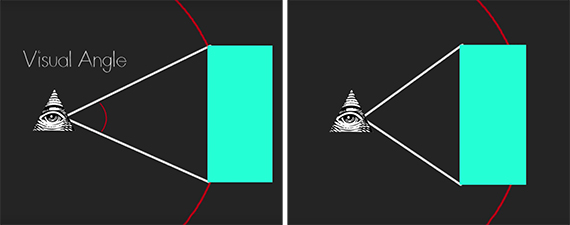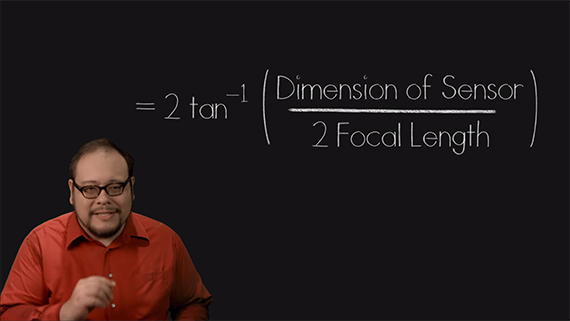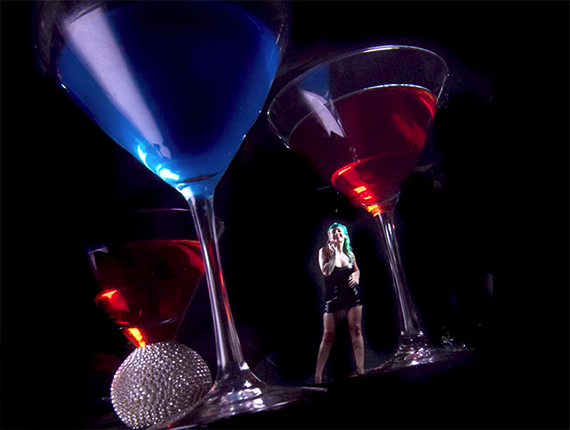Have you ever seen a picture of the sun or moon balanced between a person’s thumb and forefinger? How about a tourist’s snapshot of the Leaning Tower of Pisa being “pushed” over? As John Hess of FilmmakerIQ.com explains, what you’re seeing in those instances is known as forced perspective. And it’s not just good for novelty shots. When properly utilized, it can produce some surreal results:
Simply put, forced perspective is an optical illusion. Determined by distance from the subject and vantage point of the camera, it’s possible to directly control how large or small something looks in frame. The further away an object is from the camera, the smaller it’s going to appear (and vice-versa). To force perspective in a photograph, you warp the viewer’s perception of size by juxtaposing elements so that they appear miniature or larger than life. In Hess’s example, a full grown woman is “shrunk” to fit inside of a massive martini glass.
But how exactly does this phenomena work mathematically? Compare the angles in the figure below. The teal box represents the subject, the triangle represents the viewer, and the surrounding red circle encompasses our entire range of view. As you can see, the closer the position of the box in comparison to the viewer, the more space it takes up in our angle of view.

A lens’s field of view is determined by a combination of two factors: the lens focal length and the size of the camera sensor. Hess demonstrates how you can determine the lens field of view before ever stepping into the studio with the following equation:

Equation for Finding Lens Field of View
The key to tying everything together lies in getting everything in focus using a deep depth of field. It’s easy enough to get elements to interact with one another across distances. However, to convince audiences that everything is equidistant from the camera, having everything equally focused is absolutely crucial. Luckily, it’s possible to use math and geometry to approximate what combination of sensor and lens will provide the best possible end product. If math isn’t your forte, don’t sweat it; the calculator utilized in this tutorial is available for download here.
So sit back, relax, and enjoy seeing just how Hess goes about achieving his astounding results!
“Give forced perspective a serious try. Even if you never use it again, the discipline of understanding perspective, lenses, and focus will prove to be a strong foundation in your quest to making something great.”
Like This Article?
Don't Miss The Next One!
Join over 100,000 photographers of all experience levels who receive our free photography tips and articles to stay current:







Leave a Reply